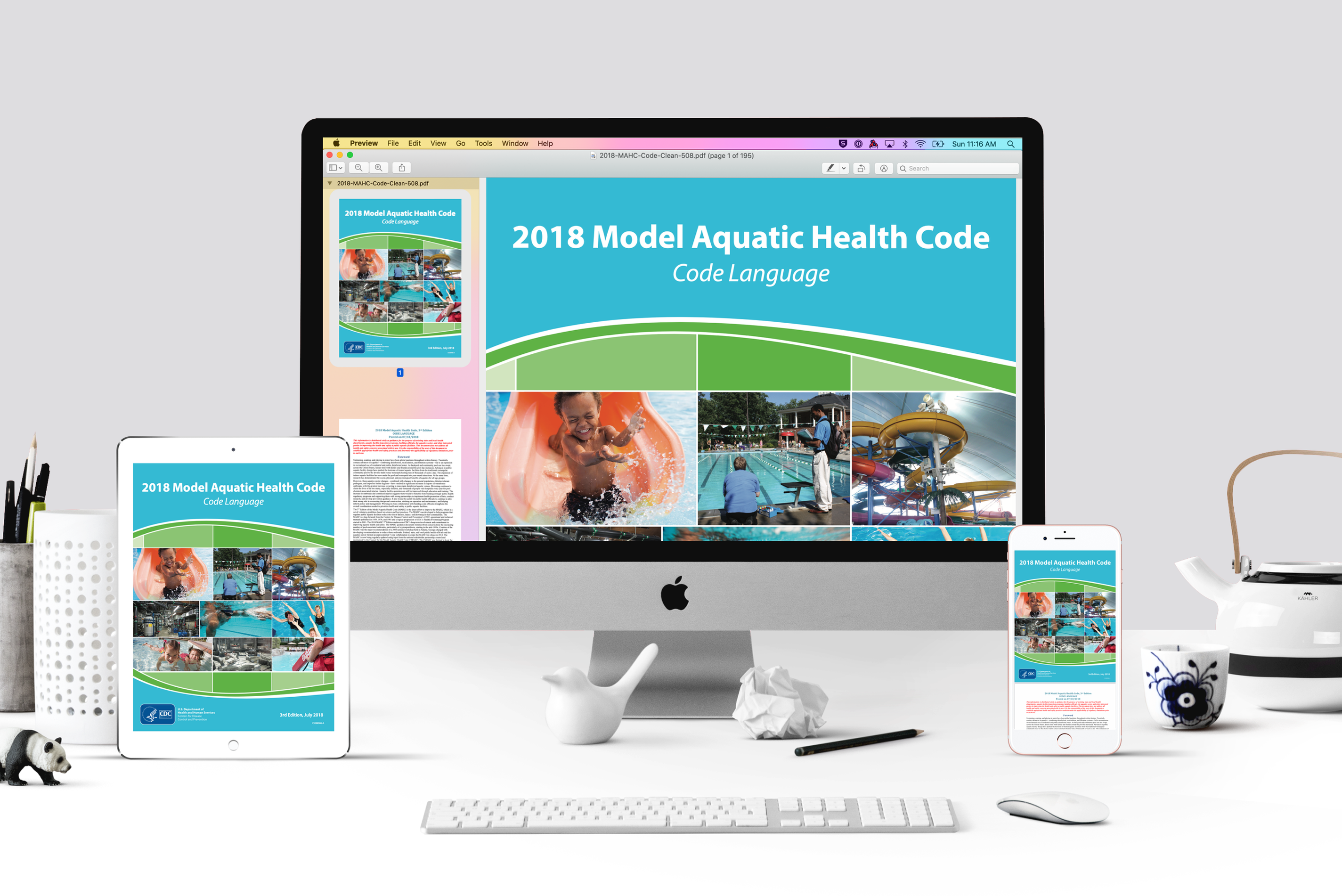Code
All POOL CODES in the United States are reviewed and approved by state and/or local public health officials with no uniform national public health STANDARDS governing design, construction, operation, maintenance, policies, or management of public swimming pools and other public AQUATIC FACILITIES.
The effort to create the MAHC stems from a CDC-sponsored national workshop called "Recreational Water Illness Prevention at Disinfected Swimming Venues" that was convened on February 15-17, 2005, in Atlanta, Georgia. The workshop assembled persons from different disciplines working in state, local, and federal public health agencies, the aquatics sector, and academia to discuss ways to minimize the spread of recreational water illnesses at disinfected AQUATIC FACILITIES. The major recommendation from this workshop was that CDC lead a national partnership to create an open access model guidance document that helps local and state agencies incorporate science and best practices into their swimming POOL CODES and programs without having to "recreate the wheel" each time they create or revise their POOL CODES. The attendees also recommended that this effort be all-encompassing so that it covered the spread of illness but also included drowning and injury prevention. Such an effort should increase the evidence base for AQUATIC FACILITY design, construction, operation, and maintenance while reducing the time, personnel, and resources needed to create and regularly update POOL CODES across the country.
Since 2007, CDC has been working with the public health sector, the aquatics sector, and academic representatives from across the United States to create this guidance document. Although, the initial workshop was responding to the significant increases in infectious disease outbreaks at AQUATIC FACILITIES, the MAHC is a complete AQUATIC FACILITY guidance document with the goal of reducing the spread of infectious disease and occurrence of drowning, injuries, and chemical exposures at public AQUATIC FACILITIES. Based on stakeholder feedback and recommendations, CDC agreed that public health improvements would be aided by development of an open access, comprehensive, systematic, collaboratively developed guidance document based on science and best practices covering AQUATIC FACILITY design and construction, operation and maintenance, and policies and management to address existing, emerging, and future public health threats.
Annex
This effort stems from a CDC-sponsored workshop titled "Recreational Water Illness Prevention at Disinfected Swimming Venues" convened on February 15-17, 2005, in Atlanta, Georgia, in response to a 2004 position statement from the Council of State and Territorial Epidemiologists asking for CDC to convene such a meeting. The workshop assembled contributors from different disciplines working in state, local, and federal public health agencies and the aquatics sector to discuss ways to minimize recreational water illnesses spread at disinfected AQUATIC FACILITIES. CDC has been working with public health and industry representatives across the United States to build this effort since 2007. Initial efforts have been focused on reducing the spread of recreational water illnesses and prevention of injuries at treated public AQUATIC FACILITIES.

